Star Aircraft
Star was founded by Edward Lisle, who started building
bicycles in 1869. The Lisle family came from Yorkshire, and Edward's
grandfather moved to Wolverhampton, and worked as a ledger clerk in
Blakenhall. Two of his three sons, Richard and Thomas, ran a japanning and
tin company in the area. Edward was born in 1852 and joined the company with
his brother, Alfred. Edward's first bicycles were advertised in 1868 and he
teamed up with Ernest John Sharratt to form Sharratt and Lisle, with
premises in Stewart Styreet. The Star Cycle Company was formed in the 1890's
and floated on the stock market. The company built its first car in April
1897.
In 1910 the Star Engineering Company built 2 aircraft. The
first was a Farman type biplane with a forward elevator. The second was a
monoplane that was powered by a Star 40h.p., 4 cylinder, water-cooled
engine.
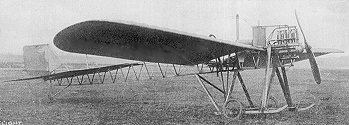
The Star Monoplane in 1911. Courtesy of the late Jim Boulton. |
The aircraft and engine were designed by Granville
Bradshaw, who was only 19 years old at the time. The engine delivered
40h.p. at 1,450r.p.m. It had a bore of 100mm and a stroke of 125mm. It
weighed 182lbs, with a Simms magneto and a water pump. |
| The engine drove a 6ft 8inch, 2 blade Clarke
propeller. The aircraft was a very unusual design. The tail
consisted of a cross-shape with 4 diamond-shaped, moveable members.
The two vertical members pivoted on the stern post and the two
horizontal members pivoted on a spar, at right angles to the stern
post. |

A front view of the aircraft. Courtesy
of the late Jim Boulton. |
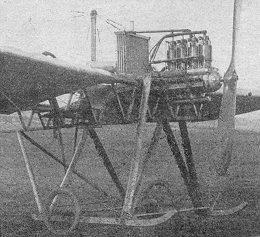
The undercarriage and engine. Courtesy of
the late Jim Boulton. |
When either pair was deflected in unison, the
effect was that of a normal rudder or elevator. Each could also be
moved in the opposite direction to the other one in its pair, to
create a twisting motion. Bradshaw hoped this would control the
aircraft laterally. The fuselage consisted of a triangular girder
construction, which was covered in fabric. The wings were
wire-braced to a king post, and the aircraft was provided with a
double-skid undercarriage, with rubber sprung wheels. The
monoplane was exhibited at the Olympia Aero Show in April 1910 and
was offered for sale at £450. On 8th June, the aircraft was taken to
a meeting of the Midland Aero Club, at Dunstall Park. Granville
Bradshaw was the pilot, but the monoplane failed to fly. |
| After the meeting, the monoplane was redesigned as a
more conventional aircraft. The same fuselage remained but without
its fabric covering. It was given a normal type of triangular fin
and rudder, and the engine was given a vertical radiator at the
rear. The triangular girder body was built in two sections so that
the machine could be taken to pieces for transport. The aircraft had
an ash undercarriage which consisted of two 'A' frames. It carried a
light axle with two pneumatic-tyred wheels and a laminated toe on
the skids. In 1911, the aircraft returned to Dunstall Park, with Joe
Lisle, who was Edward's son, at the controls. |
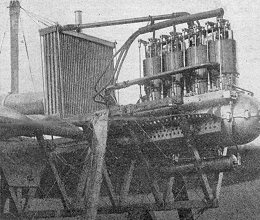
The engine. Courtesy of the late Jim Boulton. |
|
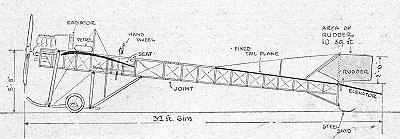
A side view of the aircraft. Courtesy of the
late Jim Boulton. |
The aircraft successfully flew and was watched by
Edward, who was so alarmed at the site, that he banned his son from
flying again. |
| Granville Bradshaw also flew the plane at Dunstall
Park and at Brooklands. He left Star and was appointed as Chief
Designer for the All British Engine Company. The fate of the
monoplane is unknown, but the engine still survives and is on
display at the RAF Museum, Hendon. At the time a 40h.p. Star engine
was put on sale at £200. |
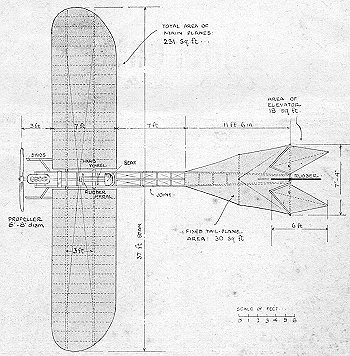
A plan of the aircraft. Courtesy of the late Jim Boulton. |
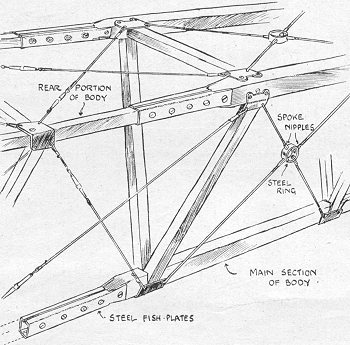 |
The two halves of the body where held together by
channelled fishplates which were fixed to the front part of the
girder. The fish plates formed a socket for the reception of the
small spars in the rear part of the frame.
The drawing shows the fishplates which
joined the two halves of the body.
Courtesy of the late Jim Boulton. |
The pilot's seat and controls.
Drawing courtesy of the late Jim Boulton. |
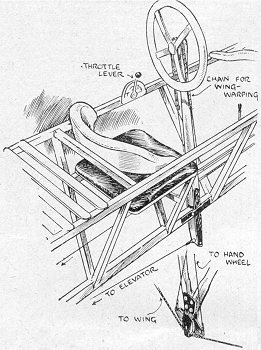 |
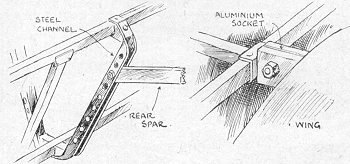 |
The wing attachment using an
aluminium socket.
Drawing courtesy of the late Jim Boulton. |
| One of the skids and wheels on
the undercarriage.
Drawing courtesy of the late Jim Boulton. |
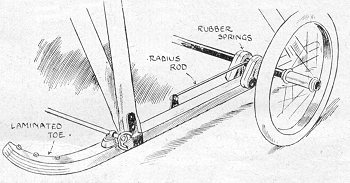 |
Star also built the wings for the Avro 504s, that were
produced by Sunbeam
Star Aircraft Engines
| In 1918 Star accepted an order for 400, V8, 80h.p.
Renault engines. The V8 engines were air-cooled and had a 90 degree
angle between the 'V'. They were fitted to DH6 trainers, but only 12 had
been built by the end of the war, when the others were cancelled. After
the war, Star returned to high quality car building. This eventually led
to the company's downfall, because it could never sell enough vehicles
to cover costs. |
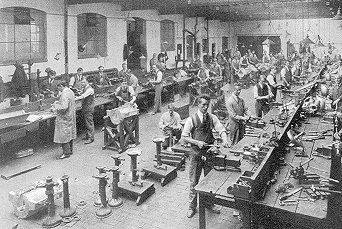
The Star Gearbox Shop in 1927. |
On 14th February, 1921, Edward Lisle died. He
was found in the Staffordshire and Worcester canal, at Coven. The Briton Car
Company, which had been set up in 1903 to produce the cheaper Star cars
under a different name, went into liquidation in 1922. The Briton factory in
Lower Walsall Street was taken over by A.J.S. The company could never
compete with mass-produced cars. Production peaked in between 1921 and 1925,
when Star sold about 1,000 cars a year. By 1927 this number had fallen to
105, and in 1928 the company was sold to Guy Motors. Guy sold Star's
factory, the Moxley Foundry, and moved production to a new factory in
Showell Road, Bushbury. This was nearer to Guy's factory, but sales didn't
improve and Star went into receivership in March 1932.

|
Return to
the Aircraft Section |
|



